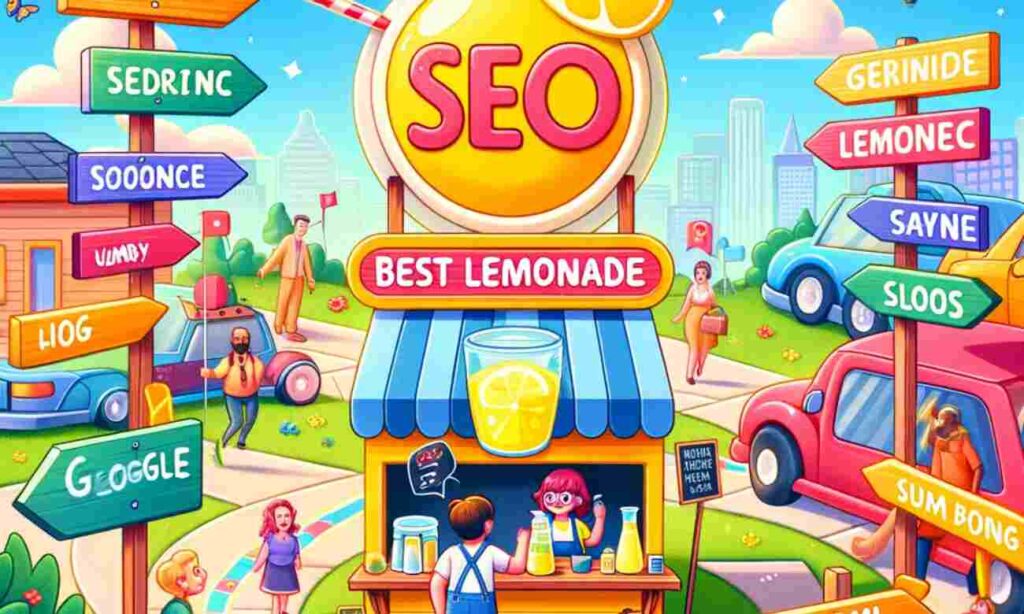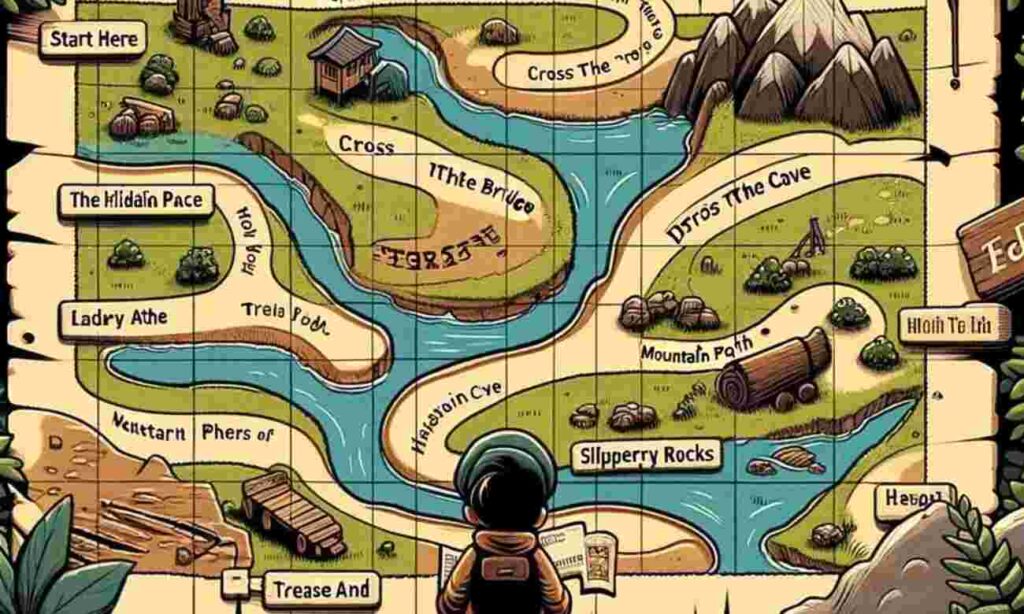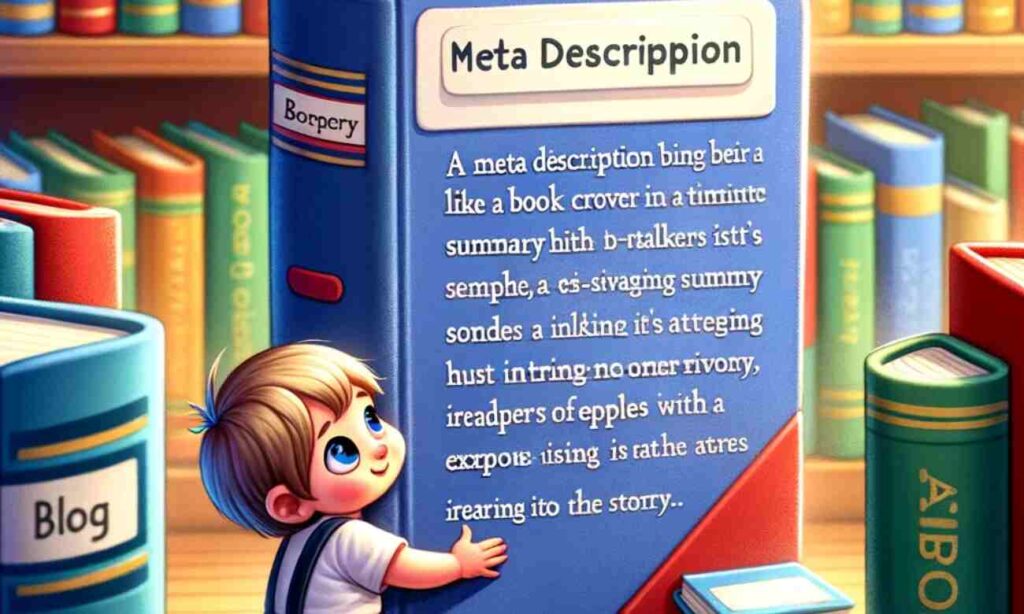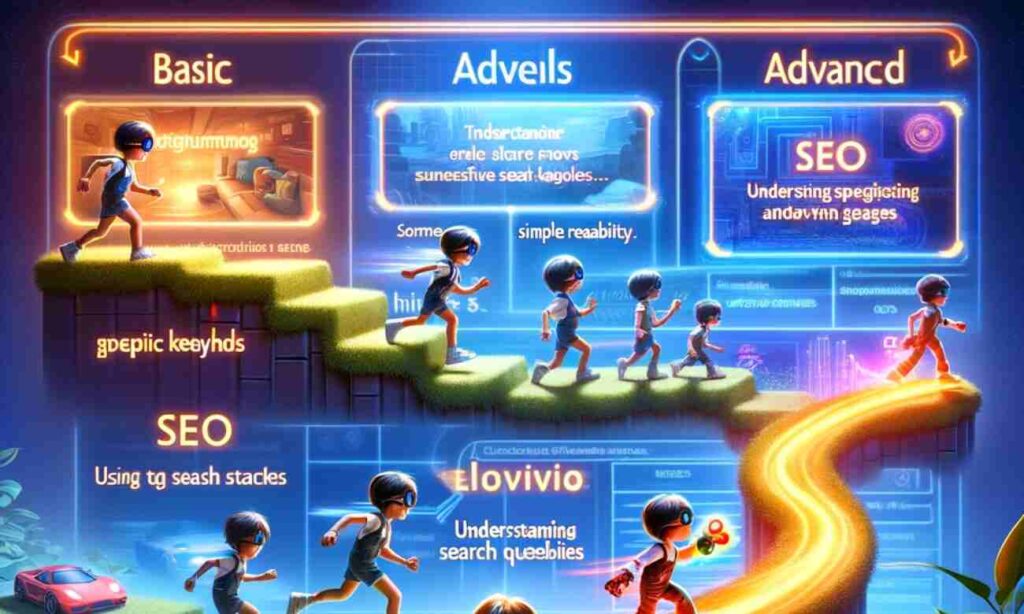Content is King: How to Craft SEO Friendly Blog Posts That Rank
Recent Blog
Ready to Transform Your Business? Contact Us Today
Content is King: How to Craft SEO Friendly Blog Posts That Rank

- Rohit Singh
- Oktober 20, 2023
- 0 Comment
Table of Contents
SEO-friendly blogging is important in today’s digital landscape. Content is not just about filling your blog with words; It’s about creating content that appeals to both your audience and search engines. However, if understood in simple words, the content needs to be helpful and relevant to the query. And if you want to know better then definitely read Google’s documents. If you want to explain SEO in the form of a story in very simple language then let’s move ahead.
Importance of Content in SEO
Quality content is the cornerstone of SEO. It’s what attracts users and keeps them engaged.

Let’s, imagine you have a big, colorful book full of interesting stories and pictures. Now, think of the internet as a giant library with millions of these books. When someone wants to find a story or picture they like, they ask the library’s helper, which is like a search engine (like Google).
The stories and pictures in your book are like the content on a website. If your book has really fun and interesting stories that people love to read, the library’s helper will remember it and show it to more people who are looking for a good story. That is how important content is for a website!
In the internet library, if your website has great content – which means interesting things to read or see – the search engine will show your website to more people. Just like in a real library, the best and most fun books get recommended the most!
What Makes Content King?
Content reigns supreme in the SEO world because it is the primary factor that search engines use to determine the relevance and value of a website.

Let’s, imagine you are the king or queen of a huge, magical kingdom. In this kingdom, the most special and important thing you have is your treasure chest, filled with sparkling jewels and gold. Now, in the world of websites and the internet, the most special and important thing is the content – that is the stories, pictures, and information on the website.
Just like how everyone in your kingdom would be excited about your treasure chest, people on the internet get excited about great content. When a website has awesome stories or super cool pictures, everyone wants to visit it, just like everyone in your kingdom would want to see your treasure chest.
So, when we say ‘Content is King,’ it’s like saying the stories and pictures on a website are as important as a king’s or queen’s treasure chest in their kingdom. They are super valuable and make everyone want to come and see!
Understanding the Basics of SEO friendly blog posts for Blogging
To create SEO-friendly blog posts, understanding how search engines work and the role of keywords is essential.

let’s imagine you’ve made a cool lemonade stand in your neighbourhood. You want everyone to come and try your delicious lemonade, right? SEO (which stands for Search Engine Optimization) is like putting up big, bright signs that help people find your lemonade stand among many others in a big town.
For your blog on the internet, SEO is like those signs. It helps people find your blog when they are looking for something interesting to read or learn about. You use special words that people are searching for (like “best lemonade” or “yummy drinks”), and when they type these words into Google (which is like a big map), Google shows them the way to your blog.
So, understanding the basics of SEO means learning how to make your blog easy to find and fun to read, just like making sure your lemonade stand has the best signs to bring people to taste your yummy lemonade!
How Search Engines Work?
Search engines use complex algorithms to find and rank content based on relevance and quality.

Alright, let us think about a game of hide and seek. Imagine your friends are hidden all around a big playground, and you are the seeker. Your job is to find everyone. Now, in the internet world, when you want to find something, like a fun video or information about dinosaurs, you use a search engine (like Google) to find it.
The search engine works like the ultimate seeker in the game. It quickly runs around the entire internet (which is like a giant playground) looking for the things you want to know about. When you type something into Google, like “how to make slime,” Google is like a super-fast seeker that checks every corner of the internet to find the best slime-making instructions for you.
So, just like how you find your friends in hide and seek, search engines help you find anything you want on the internet. They are good at seeking and showing you exactly what you are looking for!
The Role of Keywords
Keywords are the terms and phrases that users type into search engines.

Like, imagine you are playing a treasure hunt game. In this game, you get clues that help you find the hidden treasure. These clues are special words that lead you to the right spot. In the big world of the internet, when you write a blog or make a website, you also use special words. These are called keywords.
Keywords are like those clues in the treasure hunt. When someone wants to find something on the internet, like how to make a paper aeroplane or the best games for a party, they type these special words into Google. Google is like the treasure hunt guide. It looks at these words and then quickly finds the websites or blogs that have the best answers.
So, when you write a blog and use these keywords, you are giving Google the clues to find your blog and show it to people who are looking for those special words. It is like saying, “Hey Google, here’s my blog about the coolest paper aeroplanes!” and then Google shows it to people who want to make paper aeroplanes. Cool, right?
Researching the Right Keywords
Keyword research involves identifying the terms that your target audience uses when searching for information related to your topic.

Let us, imagine you are planning a super fun party for your friends. To make it the best party ever, you need to find out what games, snacks, and music your friends like the most. So, you ask around, listen to their ideas, and make a list of all the things they love. In the world of writing blogs on the internet, finding the right keywords is a bit like planning this awesome party.
Researching the right keywords means you are like a detective, trying to figure out what words or phrases people are using when they search for something on the internet. If you are writing a blog about making cool crafts, you want to know what craft ideas people are looking for. Are they searching for “easy crafts for kids” or “homemade crafts for gifts”?
You use tools on the internet (like a special magnifying glass) to see what words people type into Google. Then, you make a list of these words, just like your party list, and use them in your blog. This way, when someone searches for those craft ideas, Google knows your blog has just what they are looking for – kind of like making sure your party has all the best games and snacks your friends love! Is one of the key factors of a seo friendly blog post in blogging.
Integrating Keywords Naturally
Once you have your keywords, the next step is to integrate them into your content naturally.

Let us think of keywords like ingredients in a delicious cake. When you are baking a cake, you do not just throw all the flour, sugar, and eggs in at once. You mix them in carefully so your cake turns out yummy and smooth. Using keywords in your blog posts is like this careful mixing.
Integrating keywords naturally means adding these special words into your blog in a way that feels normal and easy to read, just like mixing ingredients smoothly into your cake batter. For example, if you are writing about “best bedtime stories for kids,” you would not just keep repeating “best bedtime stories for kids” over and over in every sentence. That would be like dumping all the sugar in one spot of your cake!
Instead, you would talk about these bedtime stories in a fun and interesting way, sprinkling the phrase “best bedtime stories for kids” here and there, just like sprinkling sugar evenly in your cake mix. This makes your blog not only helpful for people looking for bedtime stories but also enjoyable to read, just like a well-made, delicious cake!
Structuring Your Blog Post for SEO
The structure of your blog post plays a crucial role in SEO.

Imagine you are building an amazing castle out of blocks. You would not just pile all the blocks in a heap; you would arrange them in a special way to make your castle strong, beautiful, and fun to play in. Structuring your blog post for SEO is a lot like building this castle.
When you write a blog post, you do not just throw all your words and ideas together anyway. You arrange them neatly so people can find what they are looking for easily, and so Google understands what your blog is about. This means starting with a big, exciting title (like the main tower of your castle), and then using smaller headings (like smaller towers and walls) to organize your ideas.
Each part of your blog should flow smoothly to the next, just like how each part of your castle connects. You might have a section with fun facts (like a tower with a flag), another with helpful tips (like a drawbridge), and maybe some pictures or videos (like windows and doors).
This good structure helps Google see that your blog is well-built and full of great information, so it can show it to more people who are looking for what you have written about, just like how a well-built castle can be seen and admired from far away!
The Power of Headings
Headings (H1, H2, H3, etc.) help search engines understand the main topics of your content.

Think about a treasure map. It has different sections like “Start Here,” “Cross the Bridge,” or “Find the Hidden Cave.” These sections help you know where to go next. Headings in a blog post are like these sections on a treasure map. They guide your readers through your story or information.
The power of headings is cool. Big, bold headings (like those with H1 or H2 tags) are like big signs on the map, telling you about important places like “Here’s the Deep Forest” or “The Mountain Path Starts Here.” They grab your attention and tell you what the next part is about.
Smaller headings (like H3 or H4) are like smaller signs or clues on the map. They give you more details, like “Watch out for the slippery rocks” or “The treasure is close!” These headings help break up you are writing into parts that are easy to read and understand.
So, when you use headings in your blog, you are helping your readers find their way through your words, just like a treasure map guides a treasure hunter. This makes reading fun and easy, and it helps Google understand your blog better, too!
Optimizing Paragraphs and Sentences
Each paragraph should focus on a single idea, and sentences should be clear and concise.

Imagine you’re telling a story to your friend. You wouldn’t want to make the story too long and confusing with really big sentences, or too choppy with lots of tiny sentences. Optimizing paragraphs and sentences in your blog is just like telling a great story.
When you write a blog, you want to make your paragraphs and sentences just the right size. Each paragraph should be like a mini-story, talking about one cool idea or fact. This way, your readers can take a little break at the end of each paragraph, like a pause in a story to understand and enjoy what they’ve just read.
Your sentences should be clear and easy to understand, too. Not too long and twisty, and not too short and choppy. Just like in a story, they should flow nicely, making it fun and easy for your readers to keep going.
By making your paragraphs and sentences just right, you help your readers enjoy your blog more. It’s like giving them a story that’s so good, they can’t wait to hear what comes next! Is one of the key factors of a seo friendly blog post in blogging.
The Importance of Meta Descriptions
Meta descriptions provide a summary of your blog post and appear under the page title in search results.

Let’s think of a meta description like the summary on the back of a book. When you’re in a library or a bookstore, looking for a great book to read, you often read the summary on the back cover. It tells you a little about the story inside and makes you excited to read the book.
A meta description for a blog post is very similar. It’s a short explanation that appears under the title of your blog when it shows up in Google search results. This little summary gives people a quick peek into what your blog post is about. It’s like saying, “Hey, this blog post is about making the best chocolate chip cookies, and you’ll learn three secret tips!”
The importance of a meta description is huge. It needs to be interesting and clear, so that when someone reads it, they think, “Wow, I want to read more about this!” Just like a great book summary makes you want to read the book, a great meta description makes people want to click and read your blog post. Is one of the key factors of a SEO friendly blog post in blogging.
Enhancing Readability and Engagement
Making your blog post readable and engaging is key to keeping your audience interested.

Imagine you are putting on a magic show for your friends. You want to make sure everyone can see the tricks and is having a great time, right? Enhancing readability and engagement in your blog post is like putting on this awesome magic show.
Making your blog easy to read is like setting up the stage so everyone in the audience has a good view. You use clear, simple words, and short sentences, and you break up your text with spaces, just like how a magician pauses between tricks to keep the audience excited.
Engagement is about making your blog as fun and interesting as the magic show. You can add cool pictures, funny jokes, or interesting facts – these are like the magician’s colourful props or surprising tricks that keep everyone watching.
So, when you write a blog, think about how you can make it easy for your readers to understand your words (like a clear view of the magic show) and keep them interested and excited (like the thrilling tricks). This way, your readers will enjoy your blog and want to come back for more, just like they would want to see another magic show! Is one of the key factors of a seo friendly blog post in blogging.
Using an Active Voice and Conversational Tone
An active voice and conversational tone make your content more relatable and engaging.

Imagine you are chatting with your best friend in your favourite playground. When you talk, you speak in a lively and friendly way, right? Using an active voice and a conversational tone in your blog is just like having this fun, easy-going chat.
An active voice is like talking directly to your friend. Instead of saying, “The ball was thrown by me,” which sounds formal and a bit boring, you would say, “I threw the ball!” It is more like you are right there, in the action, having a good time.
A conversational tone is like using the same words and style you would use when talking to your friends. You are not too formal, and you sound friendly. It is like saying, “Hey, guess what? I learned how to make a super cool paper airplane!” instead of, “One has learnt the construction of an aeronautical paper device.”
So, when you write your blog, think about how you talk to your friends. Use that same lively, friendly way of talking in your writing. This makes your blog feel like a fun conversation, and your readers will enjoy it just like they enjoy chatting with a friend!
Incorporating Visuals and Multimedia
Visuals and multimedia elements like images, videos, and infographics can enhance the appeal of your content.

Imagine you are making a scrapbook about your summer vacation. You would not just write about what you did, right? You would also stick in photos, maybe a map of where you went, or even a ticket from a fun park. That is what incorporating visuals and multimedia in your blog is like.
When you write a blog, it is great to use words to tell your story or share information. But adding pictures, videos, or even a funny GIF is like putting those cool photos in your scrapbook. They make your blog more interesting and fun to look at.
For example, if you are writing about making a cake, you could add a video of you mixing the batter or a photo of the finished cake with sprinkles on top. This helps your readers see what you are talking about and makes them feel like they are right there with you, baking the cake.
So, adding visuals and multimedia to your blog is like making your words come to life. It is not just more fun for your readers, but it also helps them understand and remember your stories or information better, just like how pictures in a scrapbook help you remember your fun vacation! Is one of the key factors of a seo friendly blog post in blogging.
Link Building and Its Impact on SEO
Link building is a crucial aspect of SEO.

Think of the internet as a huge neighbourhood with lots of different houses (which are like websites). Now, imagine link building as creating pathways or bridges between these houses. When you build a bridge from your house to a friend’s house, it makes it easier for people to walk between them, right? In the same way, link building in SEO means creating links that connect one website to another.
This is important for a couple of reasons. First, when you have lots of pathways leading to your house (your website), it is like telling everyone, “Hey, this is a popular place!” Search engines, like Google, see these links as a sign that your website is important and useful, so they show it to more people.
Also, these links are like recommendations. If a cool and well-known website creates a link to your website, it is like they are saying, “This website is awesome, you should check it out!” Just like in your neighbourhood, if everyone talks about how great your house is, more people will want to visit.
So, link building helps your website become more popular and trusted on the internet, just like having lots of friends in your neighbourhood who think your house is the best place to be! Is one of the key factors of a seo friendly blog post in blogging.
Internal Linking Strategies
Internal links are links that go from one page on a domain to a different page on the same domain.

Think of your website as a big, exciting adventure park with lots of different attractions. Internal linking is like creating a map that guides visitors from one ride (or page) to another within the same park.
When you use internal linking, it’s like you’re saying, “Hey, if you enjoyed this rollercoaster, you’re going to love the water slide over here!” You put links in your articles that lead to other pages on your website. For example, if someone is reading about how to grow a garden, you could link to another page on your site about the best plants for beginners.
This strategy is great for a couple of reasons. First, it helps your visitors have more fun and stay longer on your website, just like visitors spend more time in an adventure park when they know about all the cool rides. Second, it’s like showing search engines, such as Google, that your website is full of interesting and related things. This can help your website show up in more searches, like a popular adventure park that everyone wants to visit.
So, internal linking isn’t just about connecting pages; it’s about making your website an exciting place where people can easily find lots of fun and useful things to explore. Is one of the key factors of a seo friendly blog post in blogging.
The Value of External Links
External links are links from other websites to your content.

Imagine your website is like your very own clubhouse, a fun place where you share stories, games, and ideas. Now, think about making friends with clubhouses in other neighbourhoods. When you invite them over to your place, and they invite you to theirs, you are making a lot of new friends, right? External links in your website work a lot like these friendly invitations.
When you put links in your website that go to other websites, it is like you are saying, “Hey, check out this cool clubhouse too!” These are external links. And sometimes, those other websites might link back to your site, which is like inviting their friends to visit your clubhouse.
This is super valuable because, first, it shows that you are friendly and you know about other cool places on the internet, just like knowing about other fun clubhouses. Second, when other good websites link to your site, it is like a big thumbs up for your clubhouse. It tells search engines like Google, “This clubhouse is awesome, and lots of people like it!” So, it helps more people find and visit your website.
In short, external links are like making a big circle of friends on the internet. They show that you’re part of a community and that your website is a cool and trusted place to visit, just like a popular and friendly clubhouse! Is one of the key factors of a SEO friendly blog post in blogging.
Leveraging Social Media for SEO
Social media can be a powerful tool in promoting your blog posts and enhancing SEO.

Imagine you have made the most colourful, amazing painting, and now you want everyone to see it. You could put it up in your room, but what if you also showed it at a big art show where lots of people come? That is a bit like using social media for SEO (Search Engine Optimization).
Social media platforms, like Instagram, Facebook, or Twitter, are like huge art shows on the internet. When you share your blog posts or website on these platforms, it’s like putting your painting in this big show. Lots of people who visit these social media sites can see your work, and if they like it, they might visit your website to see more.
This is great for a few reasons. First, it gets more people to notice your website, just like more people seeing your painting. Second, when people share your posts on social media, it’s like they’re telling their friends, “Hey, check out this cool painting!” This can help your website become more popular and can even make it show up higher in Google searches, just like a painting getting more attention at an art show.
So, leveraging social media for SEO is about using these big, busy platforms to show off your website and get more people to visit, just like displaying your painting at a big, exciting art show! Is one of the key factors of a seo friendly blog post in blogging.
Advanced SEO Techniques
To stay ahead in SEO, adopting advanced techniques is necessary.

Imagine playing a video game where you start with basic moves, but as you get better, you learn super cool advanced moves that help you win more easily. Advanced SEO techniques are like these cool moves in the game of getting your website noticed on the internet.
When you first start with SEO, you use basic steps like using the right words (keywords) and making your website easy to read. But as you get more skilled, you learn advanced techniques. These could be like understanding exactly what people are looking for when they search on Google, or finding really specific phrases that aren’t used as much but are super important for some people (like “homemade chocolate chip cookies without eggs”).
Using these advanced SEO techniques is like unlocking secret levels in your video game. They help you do even better in getting your website to show up at the top of Google’s search results, just like those advanced moves help you win more levels in your game. It’s all about knowing the game well and using some clever tricks to play it even better! Is one of the key factors of a seo friendly blog post in blogging.
Understanding User Intent
Understanding what users are looking for when they type a query into a search engine is vital.

Imagine you’re a detective with a magnifying glass, trying to figure out what your friends want when they ask for something. Understanding user intent in SEO is a lot like being that detective.
When people type something into Google, they’re not just typing words; they’re telling you what they’re looking for. For example, if someone types “easy chocolate cake recipe,” they don’t just want any chocolate cake recipe; they want one that’s easy to make.
So, as a website creator, you’re like that detective. You use your magnifying glass (which is like using your brain and some cool internet tools) to understand what people want to find. When you know what they’re looking for, you can make your website or blog just right for them. It’s like figuring out that your friend doesn’t just want a bike, but a mountain bike with cool stickers!
Understanding user intent means you’re super smart about what people are searching for, so you can give them exactly what they need. It’s like being the best detective in the game of making your website popular! Is one of the key factors of a seo friendly blog post in blogging.
Long-Tail Keywords and Their Importance
Long-tail keywords are longer and more specific keyword phrases.

Imagine you’re on a treasure hunt for the most special, hidden treasure. Instead of looking for something big and obvious like “gold,” you’re looking for something very specific, like “the smallest gold coin with a blue dragon on it.” In the world of SEO (Search Engine Optimization), these specific things are called long-tail keywords.
Long-tail keywords are like those special, detailed clues in your treasure hunt. They’re not just simple, common words like “toys” or “games.” Instead, they’re longer phrases like “the best board games for rainy days” or “soft teddy bears for bedtime.” These phrases are super specific, and not as many people might be looking for them, but the ones who are will be really happy to find exactly what they’re searching for.
The importance of long-tail keywords is huge because they’re like secret paths to your website that only some people know about. When you use these special phrases, you’re reaching out to people who want exactly what you have, like giving a perfect clue to the treasure hunters who are looking for that very special, hidden treasure. It’s a clever way to make sure the right people find your website, just like the right treasure hunters finding the most special treasure! Is one of the key factors of a seo friendly blog post in blogging.
Measuring the Success of Your Blog Post
It’s important to measure the success of your blog posts using various SEO tools.

Imagine you’ve built a model airplane and now you want to see how well it flies. You’d throw it in the air and watch how far it goes, how smoothly it flies, and if it lands safely, right? Measuring the success of your blog post is a bit like testing your model aeroplane.
When you write a blog post, you want to know how many people are reading it, if they like it, and if they’re sharing it with their friends. This is like seeing how far your aeroplane flies and if people are cheering when they see it.
There are tools on the internet that work like a measuring tape for your blog post. They can tell you how many people visited your blog (like measuring how far your aeroplane flew), how long they stayed (like how smoothly your aeroplane flew), and if they shared your post with others (like if people liked your aeroplane enough to tell others about it).
So, measuring the success of your blog post means using these tools to see how well your post is doing – how many people are reading and liking it, just like checking how well your model aeroplane flies and how much people enjoy watching it. Is one of the key factors of a seo friendly blog post in blogging.
Staying Updated with SEO Trends
SEO is an ever-evolving field, requiring continual learning and adaptation.

Imagine you’re playing a game where the rules keep changing a little bit every now and then. To keep winning, you need to stay up-to-date with these new rules, right? Staying updated with SEO trends is a lot like keeping track of the changing rules in this game.
The internet is always changing, just like the rules of your game. New ways of searching, new kinds of words people use, and even new tools on the internet can change how well your website or blog does in Google searches. So, just like you need to know the new rules to keep winning the game, you need to keep learning about these changes in SEO to make your website the best it can be.
This means reading about new SEO tips, maybe taking some cool online classes, and even talking to other people who know a lot about SEO. It’s like being a detective and a student at the same time, always looking for clues and learning new things to keep your website as awesome as possible, just like staying ahead in your ever-changing game! Is one of the key factors of a seo friendly blog post in blogging.
Conclusion: Consistency in Quality Content
Consistency in producing quality content is key to maintaining and improving your SEO rankings.
Think about your favourite TV show or comic book series. What makes you excited for the next episode or the next issue? It’s because they’re always good, right? They consistently give you fun stories and cool characters every time. Writing a blog is similar to creating these exciting stories – it’s all about consistency in quality content.
Consistency means regularly adding new and interesting things to your blog, just like how a TV show airs a new episode every week. You don’t just write one good post and then stop. You keep creating great stuff that people want to read, just like how a TV show keeps making new episodes to keep the story going.
Quality content means your blog posts are interesting, helpful, and fun to read, just like how a good TV show or comic book is exciting and well-made. It’s not just about writing a lot but writing well.
So, the conclusion is, that just like a great TV show or comic series, your blog should keep giving your readers something awesome to come back to. This keeps them excited and waiting for what you’ll share next, and it helps your blog stay popular and successful, just like a hit TV show!
Frequently Asked Questions (FAQs)
1. What is the most important element of SEO-friendly content?
Imagine you’re painting a big, beautiful picture. What’s the most important thing you need? It’s not just the paint or the brushes, but the idea of what you’re painting, right? In creating SEO-friendly content for your website or blog, the most important element is like that idea – it’s the value and relevance of what you’re writing.
Value means that your content is really useful or interesting to the people reading it. It’s like making sure your painting has bright colors and cool things to see, so people will love looking at it. Relevance means your content is about things people are really looking for. If everyone wants to see paintings of the ocean, and you paint the most beautiful ocean, everyone will want to see your painting.
So, the most important element of SEO-friendly content is making sure what you write is both valuable and relevant. It’s like creating a masterpiece painting that everyone wants to hang on their wall because it’s exactly what they love and are looking for!
2. How often should I update my blog for the best SEO results?
Imagine you have a garden where you’re growing all sorts of colorful flowers and tasty vegetables. To make your garden really flourish, you can’t just water it once and forget about it, right? You need to take care of it regularly. Updating your blog for the best SEO results is a lot like taking care of this garden.
You should update your blog often enough to keep it fresh and interesting, just like watering your garden to keep the flowers blooming and the veggies growing. This doesn’t mean you have to write a new post every day – that’s like watering your garden too much! But you might decide to add something new every week or every couple of weeks.
By updating your blog regularly, you’re telling search engines like Google, “Hey, there’s always something new and exciting here!” Just like a well-cared-for garden attracts people with its beauty and fresh produce, a regularly updated blog attracts readers with fresh, interesting content. This helps your blog grow in popularity, just like a flourishing garden!
3. Can social media engagement improve my blog's SEO?
Imagine you have a super cool treehouse that you want all your friends to visit. You tell a few friends about it, and they come and have a great time. Then, they go and tell more friends, and soon, lots of kids in the neighbourhood know about your awesome treehouse. This is a bit like how social media engagement can improve your blog’s SEO (Search Engine Optimization).
When you share your blog posts on social media platforms like Facebook, Instagram, or Twitter, it’s like telling your friends about your treehouse. People on social media see your posts, and if they like them, they might share them with their friends, or like and comment on them. This is social media engagement.
When lots of people are talking about your blog on social media, sharing your posts, and visiting your blog, it’s like more and more kids hearing about your treehouse and wanting to come see it. This buzz can catch the attention of search engines like Google. They notice that your blog is getting popular and think, “Hmm, this must be a cool place!” So, they might show your blog higher in search results, just like more kids finding out about and visiting your awesome treehouse.
So yes, social media engagement can help improve your blog’s SEO, just like word of mouth can make your treehouse the talk of the town!
4. What are long-tail keywords, and why are they important?
Imagine you’re on a special quest to find a very rare, hidden treasure. Instead of looking for something general like “a gemstone,” you’re looking for something very specific, like “a shiny blue gemstone shaped like a star.” In the world of writing on the internet, these specific clues are called long-tail keywords.
Long-tail keywords are like those detailed, special clues on your quest. They’re not just simple, short phrases like “gemstones” or “treasures.” They are longer and much more specific, like “best places to find shiny star-shaped gemstones.” These phrases are detailed and might not be searched for by a lot of people, but the few who are searching for exactly that will be super happy to find what they’re looking for.
The importance of long-tail keywords is huge because they are like secret paths to your website. When you use these long, specific phrases, you’re reaching out to people who want exactly what you’re talking about. It’s like giving a perfect, detailed map to the treasure hunters who are looking for that one special, rare treasure. They’re really helpful for making sure the right people find your website, just like the right clues lead treasure hunters to the most special, hidden gemstones!
5. How do I measure the success of my SEO strategy?
Think of your SEO strategy like a big, exciting race where you’re driving a racecar. You want to know how fast you’re going, how well you’re driving, and if you’re getting closer to winning the race, right? Measuring the success of your SEO strategy is a lot like checking your speed and position in this race.
Just like a racecar driver looks at the dashboard to see their speed and lap times, you can look at different tools on the internet to see how well your website is doing. These tools are like your racecar’s dashboard. They tell you how many people are visiting your website (like checking your speed), how long they stay on your website (like seeing how smoothly you’re driving), and if they’re doing what you want them to do, like buying something or signing up for a newsletter (like passing checkpoints in the race).
By looking at these measurements, you can tell if your SEO strategy is working well, like a racecar driver knowing they’re on track to win. If you see that lots of people are visiting your website and enjoying it, it’s like knowing you’re driving fast and doing great in the race. If not, you might need to change some things, just like a racecar driver adjusts their driving to go faster and win.
So, measuring the success of your SEO strategy is about using these tools to check how well your website is performing, just like a racecar driver keeps an eye on their dashboard to win the race!












